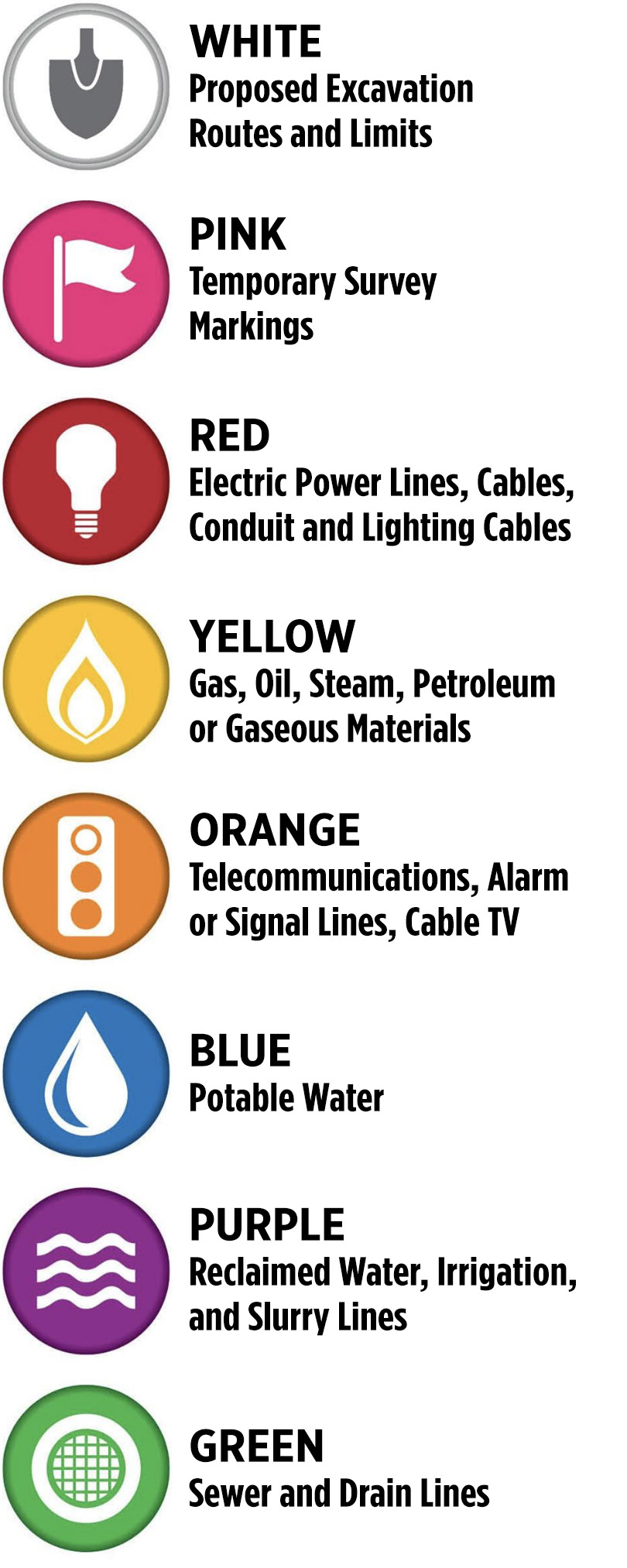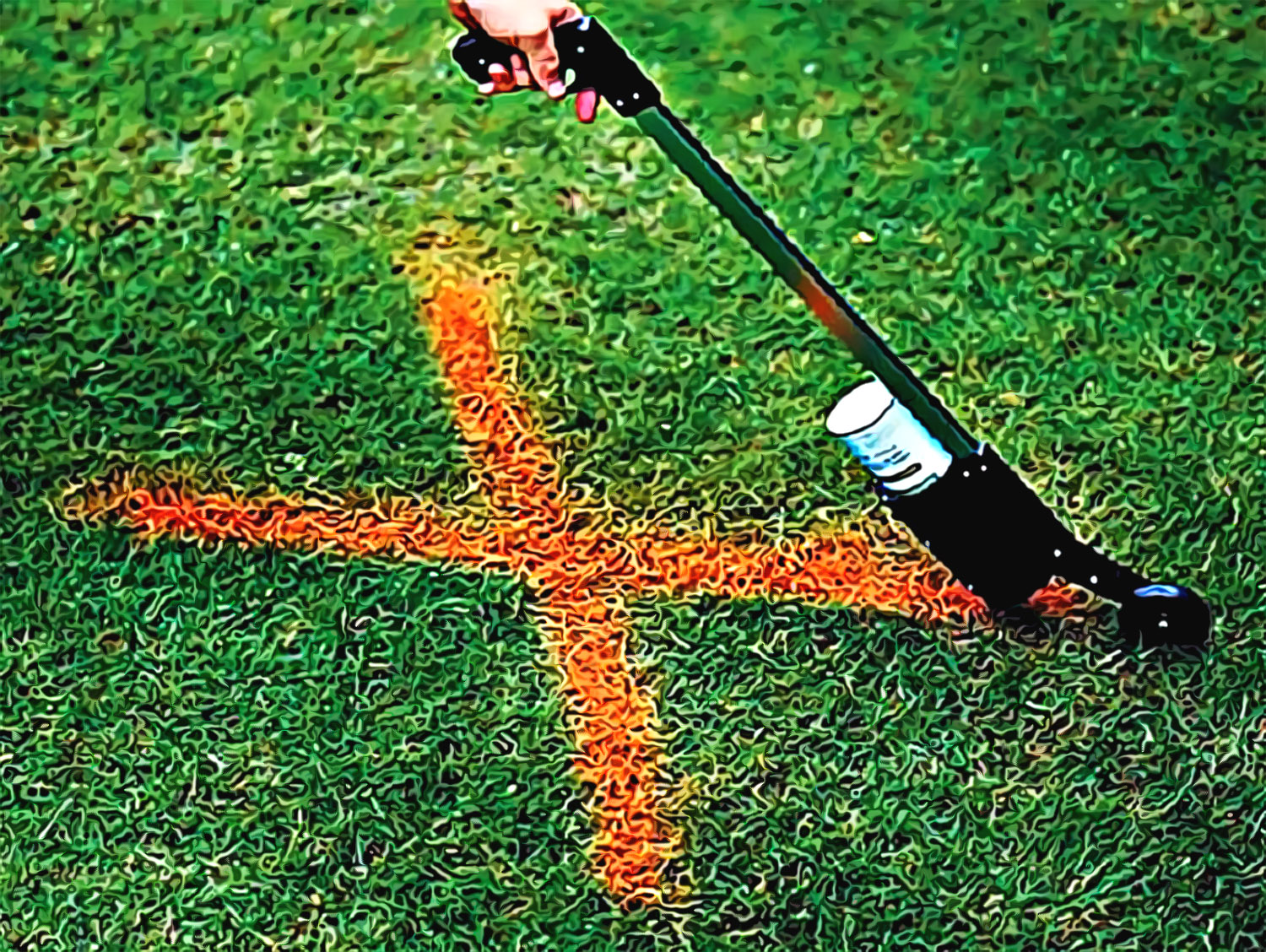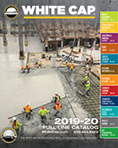Marking and Flagging Your Jobsite
Making Your Mark
Jobsite safety involves being aware of potential hazards. In order for all of us to be aware, we need a heads up about things like moving or oversized objects, buried wire or pipe, gaping trenches, and the like. Beyond the compliance issue, proper marking and flagging can ensure safety on our jobsites by highlighting potential hazards with flags, tape, paint, and signs.
The standard best practice is to survey, select and mark. Survey the area that needs safety attention, select the best protective measures for that particular site, and mark it properly and securely.
It’s All About Accident Prevention
While there are a variety of agencies and organizations that standardize safety and signage, OSHA regulates the specifications of safety signs and tags for workplaces. OSHA codifies the specifications for accident prevention signs and tags, as well as color, in 29 Code of Federal Regulation (CFR) 1910.145 and 29 CFR 1910.144. There are three basic requirements for signage:
- Danger signs indicate that special precaution is necessary and must be in red, black and white
- Caution signs advocate caution and warn against hazards; they must be yellow with black lettering or black with yellow lettering. (Road construction signs should be orange with black lettering).
- Safety Instruction signs indicate a general safety requirement and must have a white background with black lettering (sometimes it can have a green panel).

Using the proper signage is one way to indicate that workers need to proceed with caution, but signs alone cannot alert workers to all potential jobsite hazards. Implementing correctly coded flags, tapes, and paints is critical.
Creating a Perimeter
The most basic way to demark your construction or jobsite is with barricade, or Caution tape (most commonly labeled “Caution/Cuidado”). Caution tape is available in various widths, colors, and lengths and must be durable and visible. Basic barricade tape is 2 mil and will stretch easily. If your tape will be up for a long duration or you are marking high traffic areas, consider a thicker tape with more staying power (4 mil or 7 mil). The strongest reinforced tapes can get up to 7 mil and don’t stretch much at all. If you don’t want to end up re-taping your protected areas, you may want to go with a thicker tape.
Going Underground

We all understand the importance of avoiding utilities when excavating, so using Underground Detectable and Non-Detectable Marking Tapes above utility lines to mark their location is a must.
These tapes are often spec’d on our plans by the engineer. Detectable tapes can be located with a non-phosphorous metal detector prior to digging and are an effective method to protect utilities.
Non-Detectable tapes are also buried directly above utilities (usually at a 12″ depth) and are designed to warn a crew during a subsequent excavation. These tapes are durable, visible and color coded for specific utilities. Bury the appropriate tape above the utility line for an added layer of safety.
Flagging Tape – Know Your Colors
Flagging tape is used to mark off areas or alert workers to potential hazards. This non-adhesive tape is usually tied or nailed to wooden stakes. It is used in many different industries, including construction, to mark off utility lines or electrical operations, and it reduces the risk of injury by highlighting a potential hazard.
Flagging tape comes in all colors, each identifying exactly what is being cordoned off or buried beneath. According to the American Public Works Association (APWA) Uniform Color Codes, the colors indicate the following:

It is important that everyone on our crews understand these universal color codes, so we all mark our work correctly, and understand those areas marked by other contractors on a site. A lot can go wrong if things are flagged incorrectly. Using white excavation tape when you meant to demark power lines (red) could lead to an electrical hazard. Mixing up blue potable water tape for purple reclaimed water tape could really get ugly, etc.
Flags are Flying
Marking flags are durable, weatherproof, highly visible plastic flags so everyone from the crew to site inspectors to heavy equipment operator can see them on the job. They come in a variety of sizes and colors, including APWA colors and sometimes include lettering that labels various buried utilities.
Using above-ground marking flags on a construction site creates a visible line of defense for workers. Place them in the ground when demarking a roadway, indicating where underground utilities lie or highlighting a trench. They can be planted with a marking flag insertion tool – and unless they get repeatedly run over or otherwise damaged, they are reusable.
Marking Flags are also often attached to an oversized load to create a visual warning to the crew or the general public.
Pennant Flags can also be used on the jobsite and are an effective way to line a roadway or cordon off an area of the job. Pennant flags can mark a jobsite perimeter or line a sidewalk to create a barrier when crews are working overhead on lifts.
Roll Flagging (aka: Texas Flagging or Surveyor’s Flagging) is basically unmarked, color-coded barricade roll tape. For construction purposes, it may be used for surveying or temporarily marking off areas on site that don’t necessarily need to be labeled with caution tape.
Safety Skirts

The combination of a safety perimeter and flagging tape is known as a “safety skirt.” These skirts are constructed from barricade tape that is woven nylon and more durable than plastic tape. Safety skirts are highly visible and can be left up for longer periods and in extreme weather. Vertical strips of flagging tape can then be affixed to a horizontal safety skirt for enhanced visibility. Safety skirts create a clear perimeter around construction equipment or a jobsite.
Let’s talk about Whiskers

As an alternative to flags and other traditional marking methods, a newer option for marking underground utilities, survey boundaries, or construction site grades are “whiskers”. These plastic markers look like color-coded spaghetti strands. They can be attached to a nail or hammered onto a wooden stake and stick up from the ground. One great thing about whiskers is they are virtually indestructible and can withstand being run over by heavy equipment or heavy crew members. They are also available in all APWA approved colors.
Acceptable Graffiti

Using marking paint on the jobsite is a fast, effective way to visualize a perimeter, mark utilities, excavation areas, ground surveying, measurements, and general construction marking.
You’ll want to use inverted marking paint which makes spraying paint lines across a long distance much easier than a regular aerosol can. The paint is fast drying, temporary (although can last up to 60 days), and can be used on concrete, pavement, gravel, dirt, or grass.
![]()




